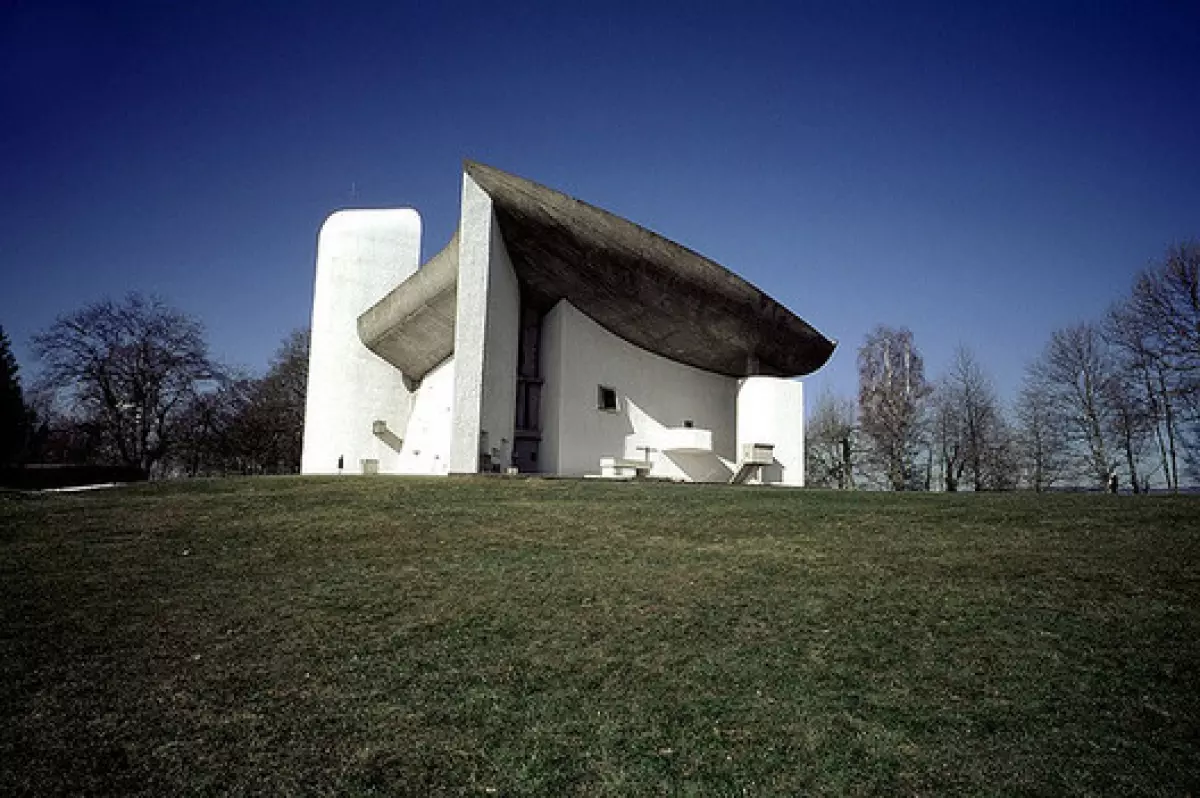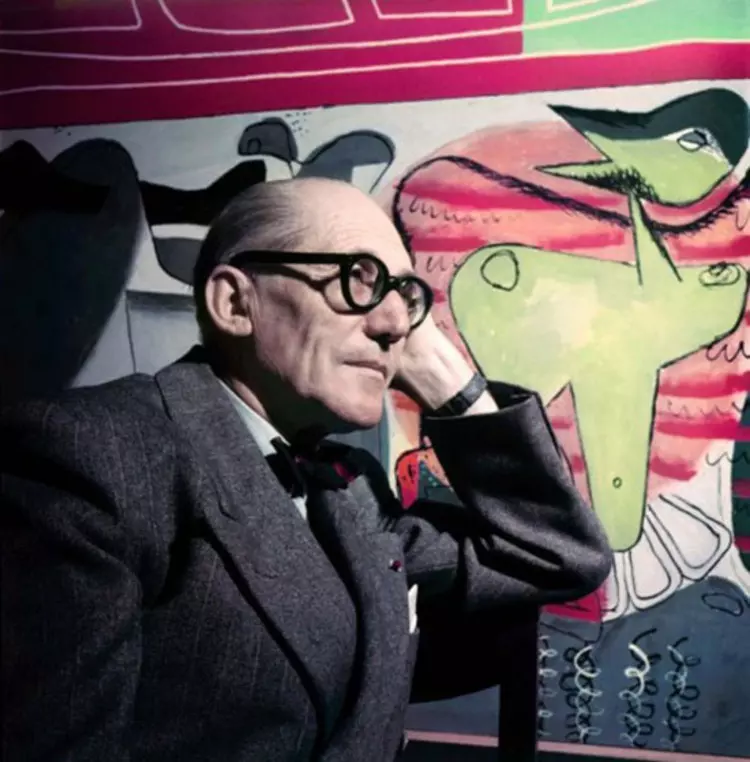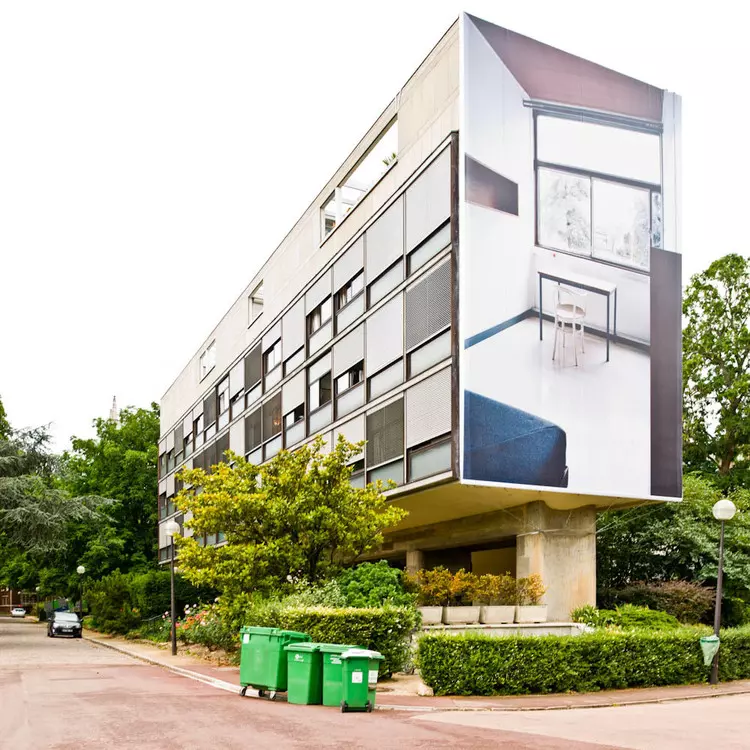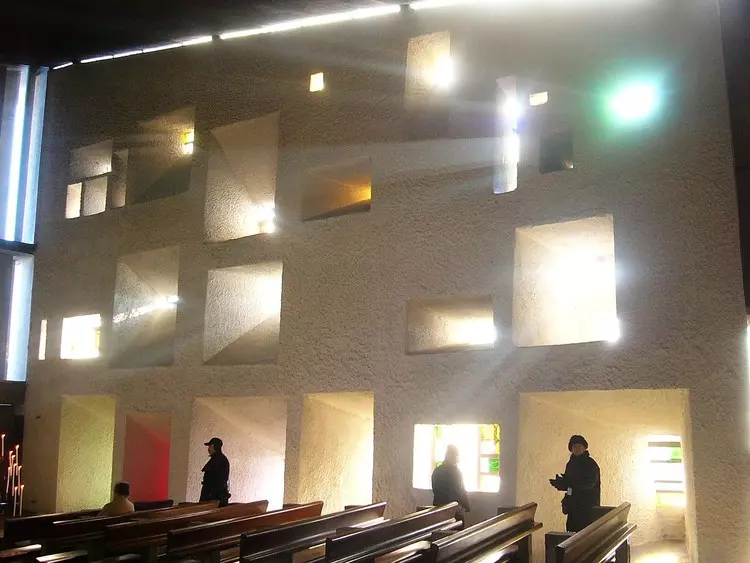 Notre Dame du Haut at Ronchamp. Image © Flickr user scarletgreen licensed under CC BY 2.0
Notre Dame du Haut at Ronchamp. Image © Flickr user scarletgreen licensed under CC BY 2.0
Born in the picturesque Swiss city of La Chaux-de-Fonds, Charles-Édouard Jeanneret-Gris, more famously known as Le Corbusier, revolutionized the field of architecture in the 20th century. An architect, writer, urban planner, painter, and polemicist, Le Corbusier's influence can be seen in cities across the globe.

Early Life and Influences
Le Corbusier's journey began with studying architecture in his hometown. However, he sought a broader perspective and embarked on a grand tour across Italy, Budapest, Vienna, and finally arrived in Paris. After working for renowned architects August Perret and Peter Behrens, Le Corbusier established his unique style that blended modernism with classical influences.
The Five Points of Architecture
Le Corbusier's innovative thinking and architectural principles are encapsulated in his famous "five points of architecture":
- Elevating buildings on "pilotis" to free the walls from their structural role.
- Embracing a free plan with walls independent of the structure.
- Designing facades freely.
- Using ribbon windows to evenly light rooms.
- Creating flat roofs that double as roof gardens.
These principles laid the foundation for his pioneering designs.

Noteworthy Works
Le Corbusier's Villa Savoye, completed in 1931, exemplifies the integration of his five points of architecture. The iconic building features raised living spaces, a curved ground floor, and a rooftop garden accessible by a ramp.

However, Le Corbusier's style evolved, and he started incorporating contrasting materials into his designs. This transition can be observed in his Weekend House, completed in 1935, where he embraced the vernacular for a richer expression.
Urban Planning and Controversies
Le Corbusier's vision extended beyond individual buildings. He was a passionate advocate for modernist urban planning, emphasizing functionality and the role of automobiles. His bold proposals, such as the "Ville Contemporaine" and the "Plan Voisin," aimed to transform cities into networks of modernist towers connected by raised highways. Not without controversy, these plans reshaped many cities worldwide.

Legacy and Influence
Le Corbusier's impact on contemporary architecture cannot be understated. His groundbreaking ideas continue to shape the discourse in the field. He laid the groundwork for renowned modern architects like Rem Koolhaas. Le Corbusier's architectural and urban planning philosophies have become deeply ingrained in the practice of architecture itself.

Le Corbusier's extraordinary body of work, from the Unité d'habitation in Marseille to the chapel of Notre Dame du Haut in Ronchamp, showcases the evolution of his distinctive style. His designs, characterized by exposed concrete and monumental scale, led to the popularization of the architectural style known as "Brutalism."
The Le Corbusier Guide
To delve deeper into Le Corbusier's works and his lasting impact on architecture, explore the links below:
- 50 Things You Didn't Know About Le Corbusier
- Le Corbusier: Ideas and Forms
- CIAM 4 and the "Unanimous" Origins of Modernist Urban Planning
- VIDEO: Villa Savoye, The Five Points of a New Architecture
- Infographic: The Life of Le Corbusier by Vincent Mahé
- 99 Dom-Ino: How Le Corbusier Redefined Domestic Italian Architecture
- North America's Radiant City: Le Corbusier's Impact on New York
- When Frank Lloyd Wright and Le Corbusier Had a Public Argument in The New York Times
- Light Matters: Le Corbusier and the Trinity of Light
- Drawing on the Road: The Story of a Young Le Corbusier's Travels Through Europe
- 7 Documentaries to Deepen Your Understanding of Le Corbusier
- Material Masters: Le Corbusier's Love for Concrete
- Rare Footage of Le Corbusier Discussing his Work, Poetry & the "Ideal City"
- See Le Corbusier's Convent de la Tourette Come to Life in this New Video
- Explore Le Corbusier's Only South American Project, the Casa Curutchet, With a Virtual Walkthrough
Le Corbusier's architectural brilliance continues to captivate and inspire generations, making him an immortal figure in the realm of architecture.
References:
- Kenneth Frampton: Modern Architecture: A Critical History (Thames & Hudson, 2007) p.225
- Hal Foster: "Bigness," London Review of Books, November 19th, 2001
- Alan Plattus: "Le Corbusier: A Dialectical Itinerary" in The Le Corbusier Guide (Princeton Architectural Press, 2000) p.12

















